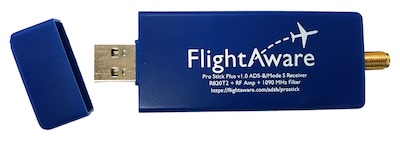Using Amps and Filters for A High-Performing Receiver
A radio signal transmitted from 300 km (186 miles) away is very, very weak. Let’s examine why some receivers can listen to a signal this far away and why others can’t. It all has to do with two measurements called Sensitivity and Signal to Noise Ratio (SNR).
Sensitivity is a measure of the weakest signal that the receiver can detect. If you ever had a hearing test, then you will know that there is a sound level below which you can’t hear. Radio receivers are the same way in that after a signal gets too low the receiver will not be able to detect it. Sensitivity is something unique to the design of the receiver itself and can’t be changed.
Signal to Noise Ratio is a measure of the signal (the thing we want to detect) and noise (the stuff that we detect but don’t want). You can think of it as listening to your friend talking. The signal is your friend’s voice and the noise is all the other sounds in the area. As you increase the distance between you and your friend there will be a distance where you will not hear them anymore. In a quiet area you will be able to hear them farther and we say you are in a low noise environment. In a loud area you will not hear far and we say you are in a high noise environment. Radio receivers are the same way and the signal and noise levels depend on your environment.

How can we apply this knowledge to enable us to receive more aircraft signals?
One way is to increase the signal part in the SNR. This is done by using an amplifier which turns a weak signal into a strong signal. The FlightAware Pro Stick and Pro Stick Plus both have a built-in amplifier so this enables them to receive signals that are farther away and weaker (you can also use separate external amplifiers in the same way).
The other way to increase the SNR is by decreasing the noise. In our example where you are talking to your friend, there may be a myriad of other audio sources that make background noise. With too much noise, you will not be able to hear your friend from even a few feet away. In radio systems we are able to filter out the radio equivalent of the background noise. It is similar to blocking anything that doesn’t sound like your friend’s voice. Even in noisy environments you can hear your friend with the right filtering. The FlightAware ADS-B filter will block most radio signals that are not from an aircraft and thus greatly decrease the noise level. Filtering is most beneficial in urban areas or anywhere that is near high-power radio transmitters such as towers for mobile phones, broadcast radio or television.
The Pro Stick Plus has a built-in filter that helps with detection of weak signals, however due to its design it may still benefit from the separate external filter in environments where the noise level is so high that it overwhelms the built-in amplifier. Unfortunately, it is very difficult to know in advance whether you will need a filter for optimal performance in any particular installation location. You can view the received message rate in Skyview with and without the filter to see which configuration works best (a higher message rate is better).
If you have a FlightFeeder kit, then you already have the necessary amplification and filtering included.
FlightAware's ADS-B components are available from the following online stores: Amazon USA, Amazon Canada, WiFiExpert (USA), ModMyPi (UK), MyHamPlace (China), RTL-SDR Blog (China) and GPIO Australia. All stores except Amazon can ship internationally.

 Back to Flight Tracking
Back to Flight Tracking

Join the discussion...
Leave your comment below.